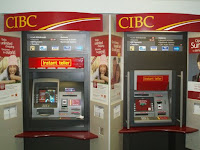Below is a a great illustration of how your score might be determined:
The reason the credit score is such an important piece of information for Canadians is because the higher the score, the better deal you will get from lenders. Loans are not merely made on a yes or no basis, there are other elements of a loan that banks use your credit score to help determine, such as the interest rate and other terms that might be attached to your loan. For instance, two individuals might be requesting a loan from the same bank. Individual A has a credit score of 650. This is a good score and he might get approved for the loan depending on other factors such as his income, employment, etc. Individual B has a credit score of 790, (750+ would be a likely approval and a best terms loan) and the same income etc. as individual A. Due to their differing credit scores, Individual B might get a loan at prime, or perhaps 3 %, and individual B might get the loan at prime + 2, or 5 %. Both have the same job and income, but the one with the better credit score gets the better deal. Thus, your credit score can save or cost you thousands of dollars over the course of a loan.
It is, therefore, very important for you to check your credit report and score on a regular basis to ensure you are managing it properly. Personally, I like to check it every six months to make sure that everything is in good standing and that there are no anomalies with my account. This can be done by contacting either TransUnion or Equifax in Canada. Both legally have to provide a paper copy of your report for free, so there is no reason why this should not be done by everyone at least on an annual basis.
- To get your credit report, and read more information on this topic, I highly recommend that you check out the websites below:
http://www.transunion.ca/ca/personal/personal_en.page
http://www.consumer.equifax.ca/home/en_ca
Happy Investing : )



